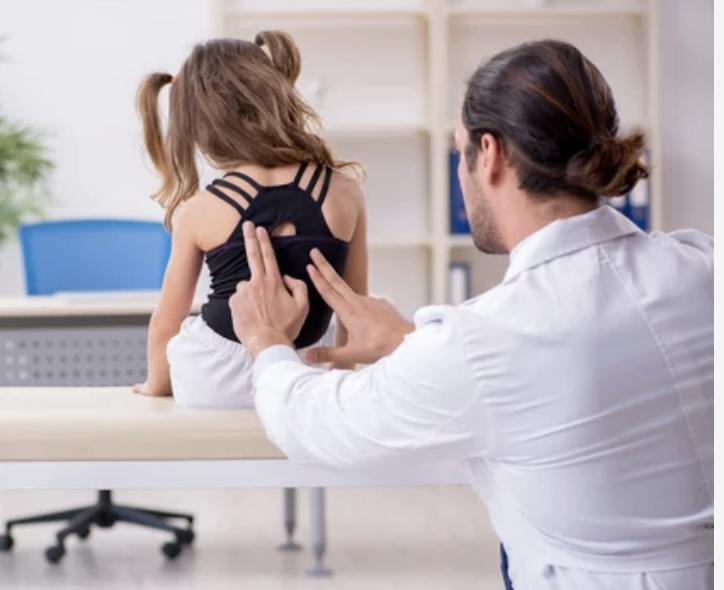What Is Vertebral Body Tethering?
Vertebral body tethering, or VBT is a surgical treatment for people with idiopathic scoliosis. The surgical procedure is used to treat idiopathic scoliosis in growing children whose scoliosis continues to worsen despite the use of bracing.
Screws are put into the sides of the vertebral bodies, and a flexible polyethylene-braided rope is put between them. The rope is then tightened, which immediately corrects part of the curve in the spine. As the child grows, the rest of the curve will straighten out. In contrast to a spinal fusion, the child will still be able to move the part of the spine where the instruments are placed.
The goal of vertebral body tethering is to maintain spinal movement. In contrast to conventional scoliosis procedures, which fuses the spine, VBT alters the spine without doing so.
The Surgical Process
During the surgery, bone screws are put into the spine. The tether is then attached to the screws. To straighten the spine, the tether is pulled tight.
The spinal curve immediately improves after surgery. Then as the child grows and the spine adapts to the tension on the tether, the curve will keep improving.
The tether stays in the body unless a specific complication occurs such as the curve becoming too straight. Most of the time, vertebral body tethering is done on children and teens who:
- Are 9 years of age or older.
- Have a curve of 45 to 65 degrees.
- Their bodies are still growing.
Benefits Of Vertebral Body Tethering
VBT can actually fix an abnormal curve, unlike scoliosis braces, which only stop the curve from becoming worse. VBT also has the following benefits:
Minimal Trauma: Since a VBT is a minimally invasive procedure, there would be less trauma to your back’s sensitive tissues. This means less blood loss and less pain after surgery, as well as a faster recovery.
Incisions That Are Hard To See: Because your surgeon will make an incision under your arm to reach your spine, the scars will be small and easy to hide.
No Loss Of Mobility: Because the VBT doesn’t fuse your vertebrae together, you won’t lose any of your spine’s mobility or flexibility. You will be able to go about your daily life and even play sports again without any serious restrictions.
Less Problems: With a VBT, you don’t have to worry about getting Adjacent Segment Disease. ASD happens when spinal fusion causes the discs near the fusion site to break down. This can make the first surgery fail, leading to the need for a second surgery on the spine.
Candidates For This Procedure
The best candidates for VBT are those whose bones aren’t fully developed yet; 0–2 on the Risser scale. Still, the spines of some adults, Risser scale 3-5 will see improvement after VBT. In order for this to be true, the spine must be flexible and not stiff.
Recovery Process
After vertebral body tethering, most children and adults spend the night in the hospital for two to three days. Many people go back to school or work in one to three weeks, and after six weeks, they are back to their normal activities.
Contact Our Clinic To Learn About VBT
Talk to a spine surgeon you trust to find out if you or your child are eligible for VBT. Dr. Asghar is a board-certified scoliosis surgeon who has been known for more than a decade for his methods of correcting scoliosis in patients. Contact our team today by calling (954) 223-5483 or fill out a contact form and we will be in touch with you soon.

